How to Fix a Boat Engine Overheating
October 2, 2025 |
By Ali

A boat engine overheating can turn a relaxing day on the water into a stressful emergency. When your marine engine runs too hot, it risks serious internal damage that can lead to expensive repairs. Many boaters experience this issue, whether they own an outboard motor, inboard engine, or stern drive system. The good news is that most overheating problems have straightforward causes and can be prevented or fixed with proper maintenance.
This guide covers what to check first when your engine overheats, common causes, how to identify faulty components like the impeller or thermostat, and practical maintenance tips to keep your boat running smoothly. By the end, you’ll know how to respond quickly and confidently to cooling system issues.
What Should I Check First if My Boat Engine Overheats?
The first rule of boating safety is never ignore temperature warnings. If your temperature gauge climbs or the alarm sounds, shut down the engine immediately. Running a hot engine can warp the cylinder head, damage pistons, and shorten engine life. Once the engine cools, begin your inspection.
Check the Raw Water Intake for Blockages
The raw water intake is often the number one culprit. If seaweed, plastic bags, or small marine creatures clog the intake grate under your boat’s hull, water won’t flow into the cooling system. Without this water supply, the engine heats rapidly. Clearing the intake is usually a quick and effective fix.
Inspect Coolant Levels in Closed Cooling Systems
Some boats, especially larger cruisers or yachts, use closed-loop cooling systems similar to automobiles. Check the coolant reservoir. If it’s low, the system may have a leak. Always let the engine cool before opening the cap—pressurized hot coolant can cause burns.
Look for Damaged or Loose Hoses
Hoses are critical in moving coolant or raw water. A cracked, loose, or leaking hose can reduce flow and trigger overheating. Inspect for drips, bulges, or worn clamps. Replacing weak hoses is inexpensive and prevents future breakdowns.
What Are the Most Common Causes of a Boat Engine Overheating?
If basic checks don’t resolve the issue, the problem likely involves one of the following components.
Worn or Damaged Impeller
The water pump impeller, made of rubber fins, pulls water into the engine. Over time, impellers crack, stiffen, or lose blades. A weak impeller reduces circulation, leaving the cooling system unable to regulate temperature. Since impellers wear naturally, most manufacturers recommend replacement every season or every 100 hours of operation.
Clogged Water Intake or Strainer
Even if the intake grate looks clear, the internal sea strainer may be blocked. This filter traps debris before it enters the engine. When full of sand, seaweed, or shells, it restricts water flow. Cleaning the strainer is simple but often overlooked.
Thermostat Malfunction
Your engine’s thermostat regulates coolant temperature. If it sticks closed, coolant cannot circulate, leading to immediate overheating. If stuck open, the engine runs too cool, which also causes efficiency problems.
Blocked or Corroded Cooling Passages
Engines operated in saltwater environments face mineral build-up and corrosion. Over time, salt crystals and scale deposits reduce water flow through narrow cooling passages. If not descaled regularly, corrosion can permanently damage engine components.
High RPM Stress on Cooling System
Operating at high speeds for long periods generates more heat than idle cruising. If the cooling system is even slightly compromised—by a weak impeller or minor blockage—it won’t keep up with the added stress.
How Do I Know if My Boat’s Impeller Is Bad?
Because impellers are central to the cooling process, identifying failure signs is crucial.
- Restricted Water Flow: A weak or nonexistent telltale stream from the exhaust outlet signals poor circulation.
- Temperature Fluctuations: If your engine runs cool at idle but overheats under load, the impeller may be partially working.
- Physical Damage: Inspecting the impeller directly is the surest method. Look for missing fins, brittleness, or cracks. Replace immediately if damaged.
How to Test a Boat Engine Thermostat
Testing a thermostat is simple and can prevent unnecessary guesswork.
- Remove the Thermostat: Locate it in its housing and inspect for corrosion or buildup.
- Hot Water Test: Place it in water on a stove and heat gradually. Using a thermometer, check if it opens at the correct temperature (typically 140–160°F or 60–71°C).
- Replace if Faulty: If it fails to open or remains stuck, install a new one. Thermostats are inexpensive but vital for maintaining correct operating temperatures.
Can a Bad Thermostat Cause Overheating?
Absolutely. A thermostat stuck closed traps coolant in the engine block, causing temperatures to rise dangerously fast—even at idle. Typical symptoms include:
- Rapid temperature spikes after startup.
- Inconsistent readings on the gauge.
- Visible coolant flow problems.
Replacing a faulty thermostat is one of the easiest ways to prevent marine engine overheating.
Why Does My Boat Overheat at High RPM but Not at Idle?
This situation often confuses boaters. At idle, the engine may seem fine, but at higher speeds, temperatures climb quickly.
- Reduced Cooling Efficiency: Engines generate more heat under load. If any part of the cooling system is compromised, it can’t keep up.
- Impeller Weakness: A worn impeller may provide minimal water at idle but fail at higher RPMs.
- Intake Restrictions: At speed, water flow around the hull changes. Even small obstructions at the intake can limit circulation when demand is highest.
Why Is My Boat Overheating but Water Still Comes Out of the Exhaust?
Water flow from the exhaust doesn’t always mean the system is working properly.
- Partial Blockages: Deposits inside cooling passages reduce heat transfer, even if water exits normally.
- Air Leaks: Loose clamps, cracked hoses, or bad seals can draw air into the system, disrupting circulation.
- Weak Circulation: A slipping pump belt or worn impeller may deliver water inconsistently, leading to overheating despite visible flow.
How Do You Clean a Boat Engine’s Cooling System?
Keeping the cooling system clean is critical for performance.
Freshwater Flushing
After every outing—especially in saltwater—flush the engine with freshwater. This prevents salt, sand, and organic matter from settling in passages. Many boats include a flush port for easy hose connection.
Using Descaling Solutions
When engines face hard water mineral buildup, commercial descaling products break down deposits. Follow manufacturer instructions to avoid damaging internal surfaces.
Cleaning Strainers and Hoses
Inspect strainers regularly for trapped debris. Check hoses for internal blockages or cracks. Replacing weak hoses ensures consistent flow.
How Do I Know If My Boat Temperature Gauge Is Accurate?
An inaccurate gauge can lead to false alarms or missed overheating events.
- Infrared Thermometer Test: Compare the gauge reading with an IR thermometer aimed at the thermostat housing.
- Inspect Electrical Connections: Corroded or loose wires can distort readings.
- Replace Faulty Gauges: If readings remain inconsistent, install a marine-rated replacement.
Regular Maintenance to Prevent Boat Engine Overheating
Prevention is always better than emergency engine repairs. Include the following in your maintenance routine:
- Replace the Impeller Annually: Essential for reliable cooling.
- Flush the Cooling System: Prevents salt and mineral buildup.
- Inspect the Thermostat: Replace if corroded or malfunctioning.
- Keep Strainers Clear: Prevents debris from entering the system.
- Check Gauges: Ensure accurate temperature monitoring.
By performing these steps consistently, you extend the lifespan of your engine and reduce the chance of sudden overheating.
Final Thoughts
A boat engine overheating is not something any boater wants to experience, but knowing how to diagnose and fix the problem makes a huge difference. From checking raw water intakes and replacing impellers to flushing cooling systems and testing thermostats, these preventive measures keep your boat dependable and safe.
With proper care, you’ll spend less time troubleshooting and more time enjoying the water—confident your marine engine cooling system is working exactly as it should.

Ali
Ali Hassan is a seasoned SEO content writer with over 10 years of experience in crafting high-performing content for WordPress websites. Specializing in keyword-rich blog posts, landing pages, and service descriptions, Ali blends technical SEO knowledge with engaging storytelling to drive organic traffic and improve search engine rankings.

